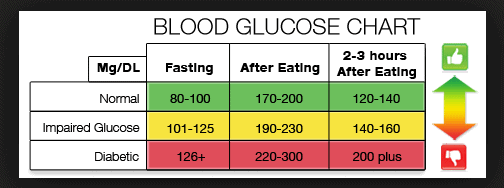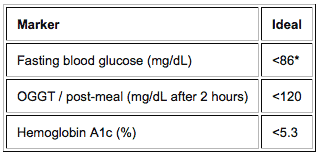Know Your Blood Sugar Numbers, Part 2

Know your blood sugar numbers, and if they’re high, do something about it. The three numbers are important to know about: Your fasting, post-meal and Hemoglobin A1(c) results. To optimize health, all three need to be lower than average.
To know your blood sugar numbers is the start of doing something about them, as I described in Part 1 of this two-part series.
This “Part 2” and an update to Part 1, appropriately entitled, My Blood Sugar Numbers Confound Me, Part 1.
I was both confounded and surprised because my diet is pretty darn excellent, particularly concerning those pesky, debilitating high glycemic carbs that proliferate the SAD (standard American diet).
As is my tendency, I’ve been digging into the matter, trying to figure out how I could possibly have a fasting glucose serum of 100 mg/dL (milligrams per decilitre), which, dear reader, is pre-diabetic!
If you haven’t read Part 1, you may wish to do so before continuing so that you can have context for the rest of this post.
The first thing that occurred to me when I got my blood test results was that both my father and uncle (his brother) developed adult-onset diabetes, which is called “Type 2 Diabetes”.
I always thought that they both contracted that disease in their 60s because they ate crap, were overweight and didn’t exercise, but now I’m wondering if they had a genetic predisposition to type 2 diabetes and therefore would have gotten it even if they ate and exercised…ahh… well… like me?
More testing and research was needed, and I dove into both.
As the video in “My Blood Sugar Numbers” describes, I grabbed a glucometer and began testing my blood. I’ve been testing fasting blood glucose, and one and two hour post meal glucose readings called postprandial.
But I can tell you now that some of the measures I’ve undertaken to lower blood sugar (mostly new supplements) have had mixed results. My postprandial numbers have been in a really good range, between 115 and 120 mg/dL, but my fasting blood glucose number have remained stubbornly high, averaging around 90 mg/dL.
Acupuncturist and practitioner of integrative medicine, Chris Kresser thinks these are the ideal blood sugar numbers, given patient outcomes in his clinic:
In addition to the favorable post-meal blood glucose numbers, I have another blood measurement marker that’s in my favor.
Note in the chart above that “marker” termed Hemoglobin A1(c). This measures how much glucose permanently gets glycated (bonded) to hemoglobin in red blood cells. This measurement roughly indicates your average blood sugar over the previous three months. The higher it has been over the past three months, the more likely it is that glucose (sugar) is permanently bonded to hemoglobin, which is not a good thing.
Hemoglobin A1(c) is expressed in percentage terms because it’s measuring the percentage of hemoglobin that’s bonded to sugar.
The acceptable range is 4.8 to 5.7%
Mine was 5.3%. Ideally, it would be lower, but 5.3% is fine.
So, in the spirit of encouraging you to know your blood sugar numbers, let’s sum up what we have so far about my blood glucose:
1. At 100 mg/dL, fasting glucose serum is high
2. At 115 – 120, post meal glucose serum is ideal
3. At 5.3%, A1(c) is fine
If #2 and #3 is good, why the poor result with #1?
Back to Chris Kresser…
Turns out, I may not have to worry much about this. In Why Your Blood Sugar Isn’t Normal, Chris gives me an excuse to be less concerned. He reports that it’s not uncommon for people on restricted carbohydrate diets (something I’m experimenting with, not recommending) to have high fasting glucose serum numbers.
Why?
Chris says very low-carb diets will produce elevated fasting blood glucose levels…
“Because low-carb diets induce insulin resistance. Restricting carbohydrates produces a natural drop in insulin levels, which in turn activates hormone sensitive lipase. Fat tissue is then broken down, and non-esterified fatty acids (a.k.a. “free fatty acids” or NEFA) are released into the bloodstream. These NEFA are taken up by the muscles, which use them as fuel. And since the muscle’s needs for fuel has been met, it decreases sensitivity to insulin. You can read more about this at Hyperlipid.”
(Source)
Now, it might be convenient for you to wave away your high fasting glucose serum number, muttering something like, “Gee, I haven’t eaten a pizza all week, so I must have a low-carb diet.”
Not so fast. You need to also look at your post meal and Hemoglobin A1(c) numbers too. If you legitimately are on a low-carb diet and both the post meal and A1(c) numbers are good, then it could be that your situation is accurately described by Chris’ explanation quoted above.
If you don’t know your blood numbers, I advise that you get some blood work done. Check with your doctor and/or examine these Life Extension Foundation blood tests:
- Diabetes Management Profile Comprehensive Blood Test
- Glucose Tolerance Test with Insulin (8 specimens) Blood Test
- Fasting Glucose and Insulin
- Oral Glucose Tolerance Test
As for me, I’m going to continue to explore ways to lower my 90 mg/dL number. You can keep up to date with my musings about lowering your blood sugar numbers here.
That’s it for now.
P.S. If you have yet to read Part 1, click the button ==> Part 1
Last Updated on August 3, 2022 by Joe Garma




